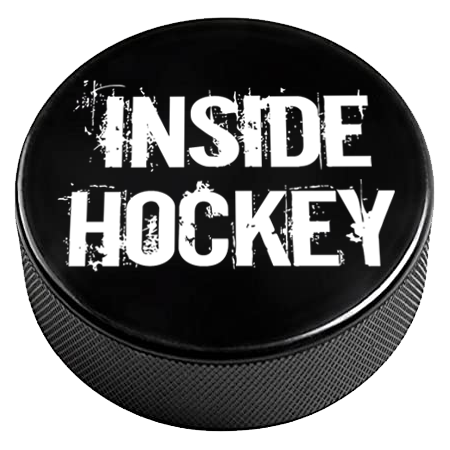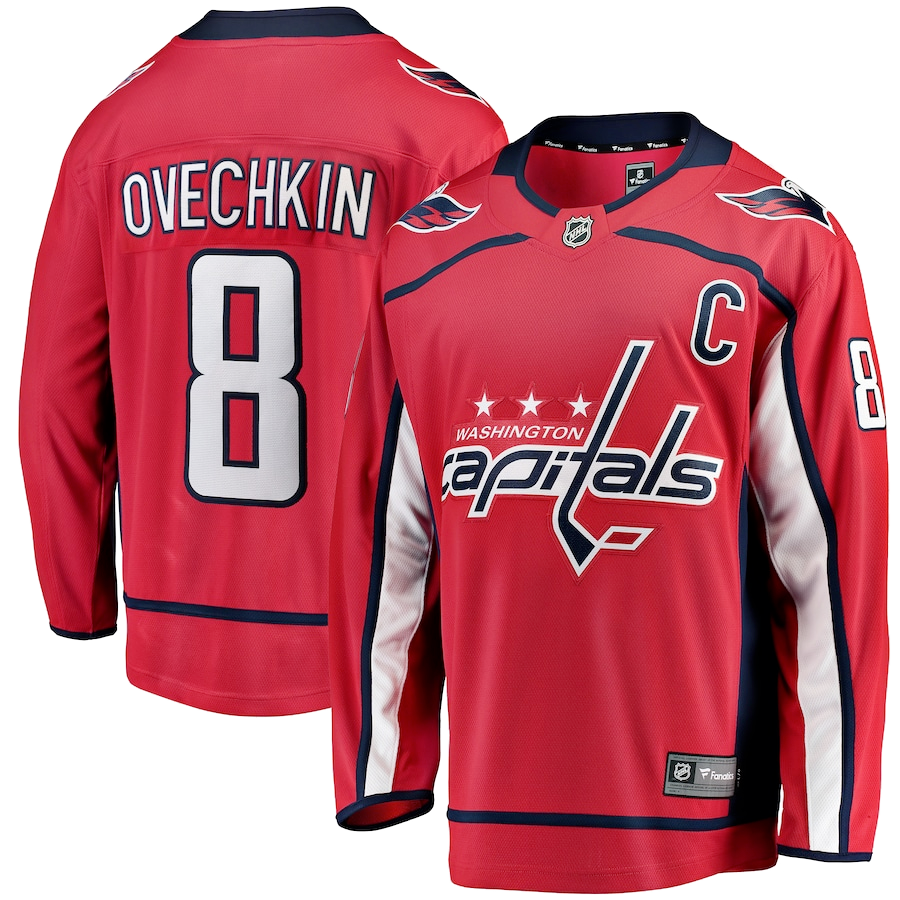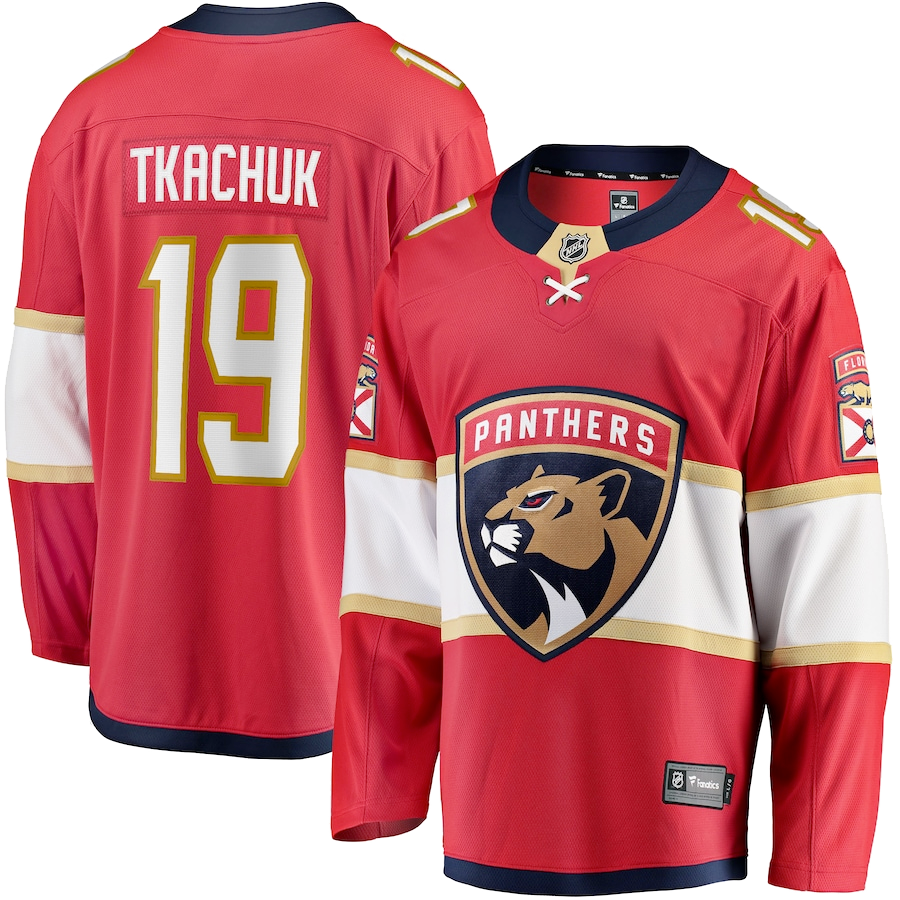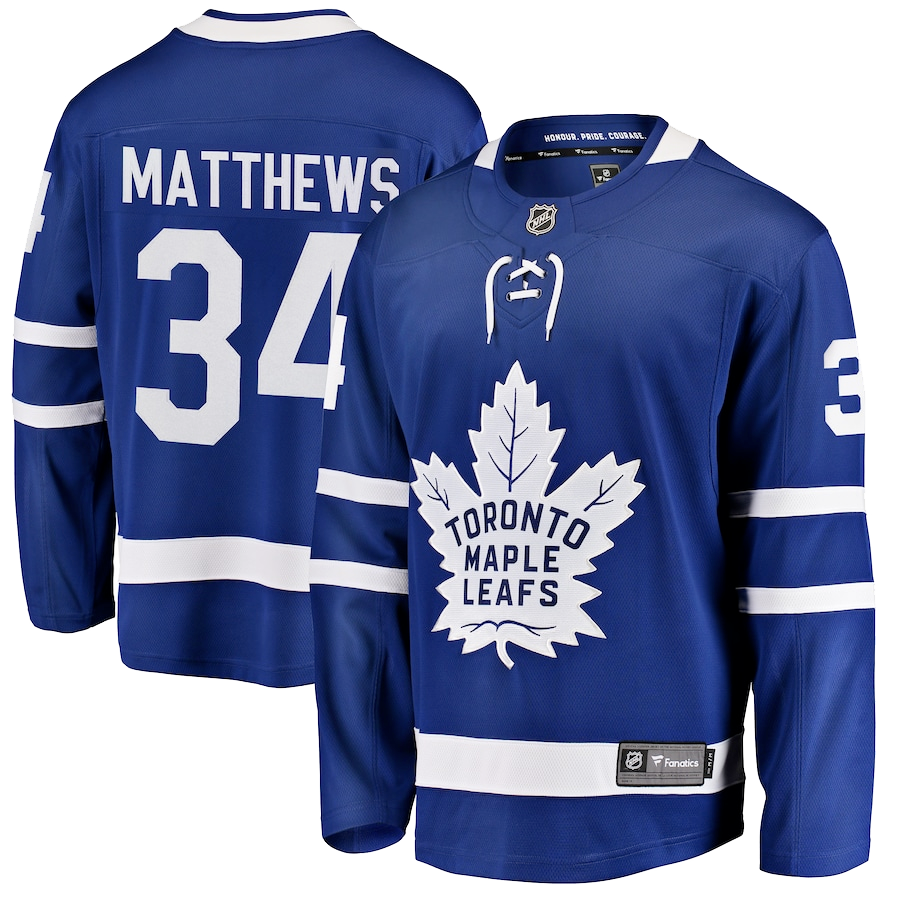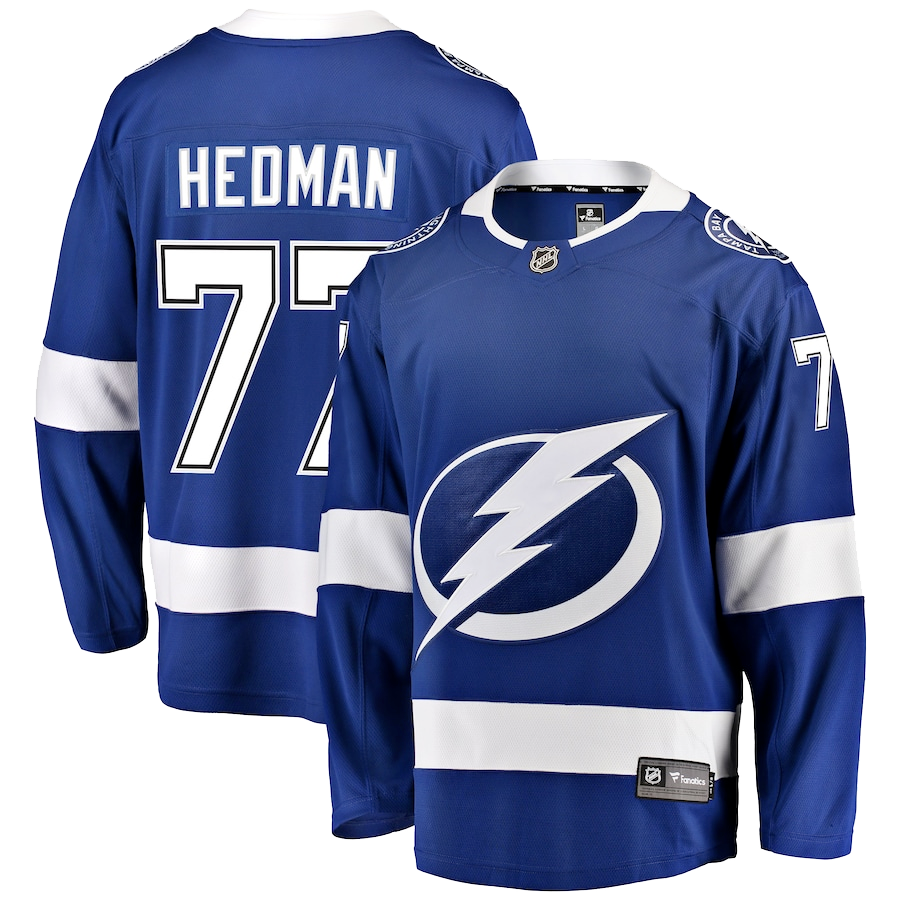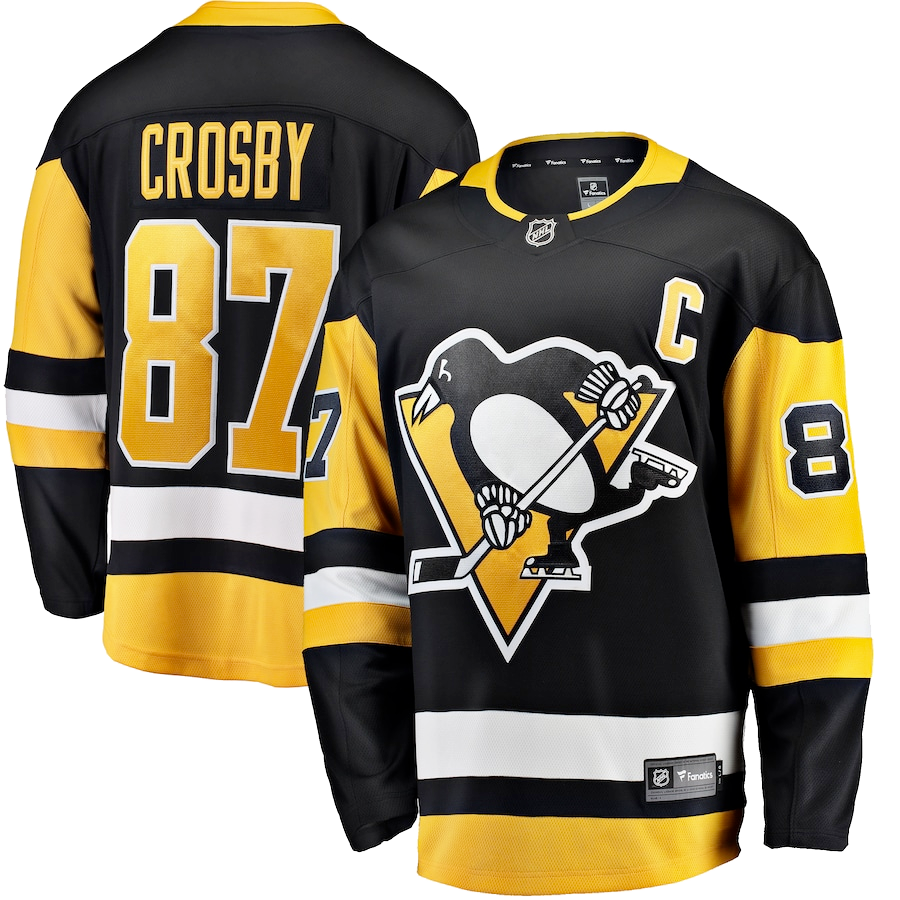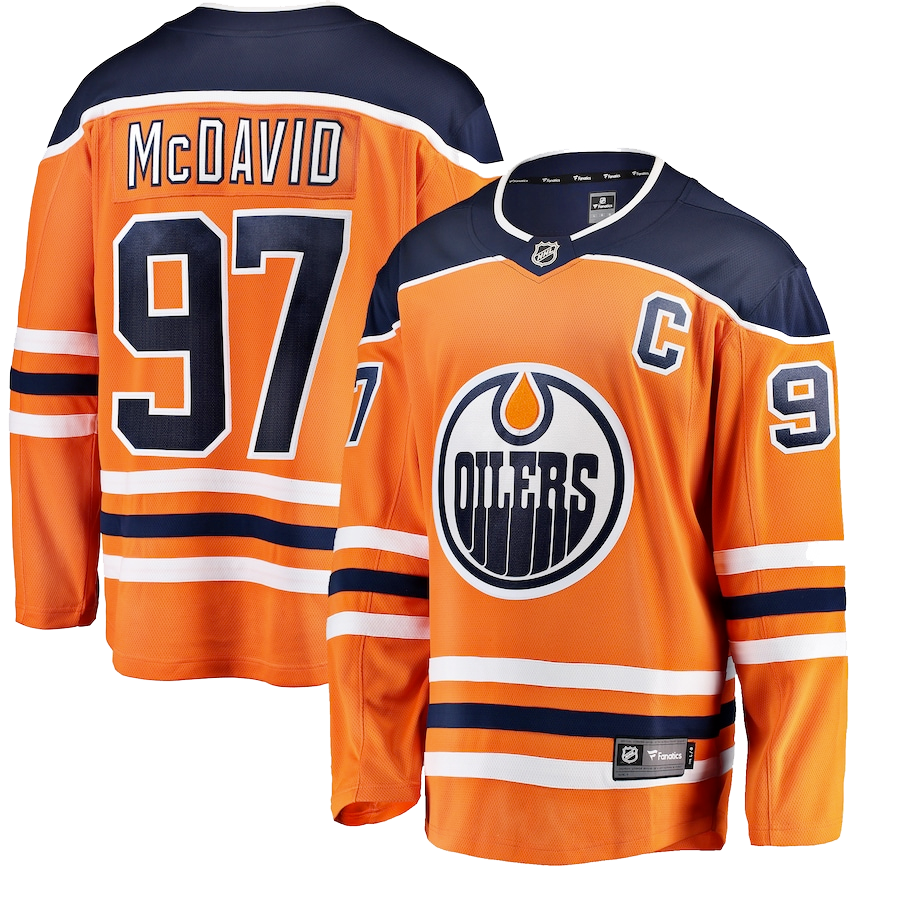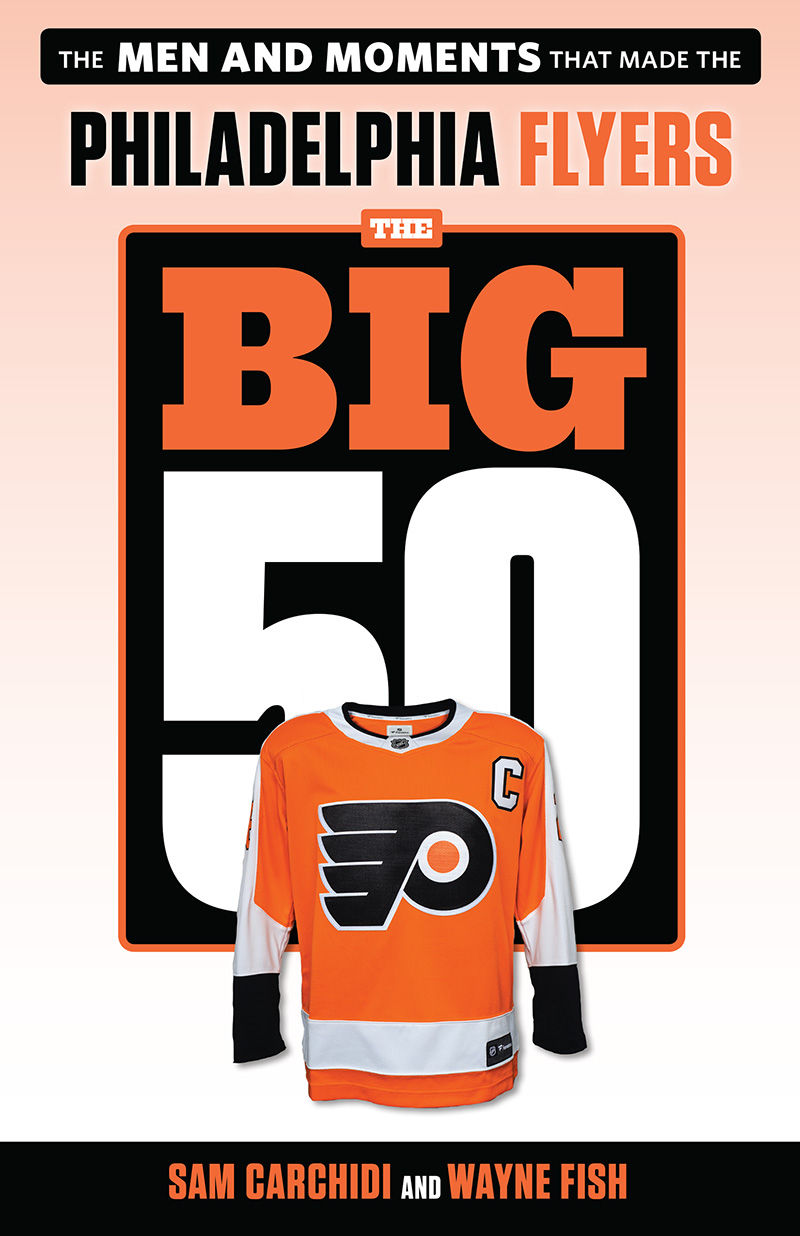 Imagine experiencing a combination of mournful sadness and sheer joy in the same work of non-fiction.
Imagine experiencing a combination of mournful sadness and sheer joy in the same work of non-fiction.
You will sample both ends of the emotional spectrum when you absorb The Big 50 – The Men and Moments that Made the Philadelphia Flyers (Triumph Books). This recent release was co-written by veteran Flyers beat writer/reporters Sam Carchidi (Philadelphia Inquirer) and Wayne Fish (Bucks County Courier Times).
The Big 50 painfully recalls in Chapter 26 the tragic death of emerging superstar Flyers goaltender Pelle Lindbergh in 1985. The Swedish netminder crashed his new Porsche 930 Turbo into a brick wall in Somerdale, N.J. while losing control of his vehicle at an estimated 80 mph in the early morning hours of November 10. The previous year’s Vezina Trophy winner was later determined to be driving under the influence of a blood alcohol level of .24 percent, well in excess of the state’s legal limit of .10.
Fans, players, and those who covered the team were simply stunned. “The world just stopped for us,” said Rick Tocchet, a young Flyers’ forward who is currently the head coach for the Phoenix Coyotes. “Things were going good. It just stopped everything. Looking back, I was a walking zombie.”
Conversely, there are two separate chapters sure to put a smile on any Flyer fan’s face. Each one celebrates one of the team’s two consecutive Stanley Cup triumphs in 1973-74 and 1974-75, respectively, that converted the City of Losers into the City of Winners.
Chapter 15 (’74 Stanley Cup Champs: A Day To Make History) recalls the events on the ice that led to victory over a powerful, loaded Boston Bruin sextet led by superstars Bobby Orr and Phil Esposito, and the realization during the victory parade that there were a lot more Flyer fans than many people realized. “A lot of people think hockey (fans are) a small group of people that are very loyal,” said Ed Snider. “But we have almost 20,000 seats, and in many instances four people hold those tickets (for one seat during the regular season). We have hundreds of thousands of fans. We know that we are much bigger than the press sometimes gives us credit for.”
Chapter 16 (’75 Stanley Cup Champs: Return To Glory) reminisces about the game-winning goal of the Cup-clinching 2-0 victory in Game Six early in the third period at Buffalo’s Memorial Auditorium. That red light was set off by an unlikely goal scorer, hard-nosed left wing Bob Kelly. “Everyone kept saying the first Cup was a fluke, and we still had to prove ourselves,” said the rugged forward. “But we believed in ourselves.”
These are just three of 50 well-crafted chapters, many of which reawaken the echoes of this unique franchise’s history. In addition, various short sidebars within those chapters anecdotally recall morsels such as “good luck charms” Kate Smith and Lauren Hart singing the National Anthem to result in critical Flyers’ home ice victories, Blues forward Red Berenson’s NHL record-tying six goals in a game at the Spectrum in early November of 1968, Flyer defenseman Larry Zeidel’s stick fight with Boston’s Eddie Shack in response to what Zeidel claimed were anti-semitic remarks he said he’d heard from several Boston players, and “sign man” Dave Leonardi, a school teacher and super fan who created and exhibited hundreds of entertaining, riotously funny signs such as “Tell it to the Czar”, “Insert Puck Here” and “Next Goalie” from his season ticket seats behind the goaltender. The book also includes a handful of black and white photos of players and personalities.
This 318-page work is a veritable treasure trove of commentary and recapitulations of the players and personalities, of the front office executives and the magical, gratifying, disappointing and saddening moments that combine to celebrate this 52-year old NHL franchise.
Unforgettable players
Some of the more insightful Flyers player profiles include:
- 14 Dave Schultz: Gentle Off the Ice, A Hammer On It that highlights the emergence of one of the NHL’s best fighters and most fearsome warriors. Schultz finished his nine-year NHL career with almost 2,300 penalty minutes as a member of the Flyers, Kings, Penguins and Sabres. Drafted by Philadelphia on the 5th round of the same 1969 NHL Entry Draft that also produced center Bobby Clarke and winger Don Saleski, he was assigned to the Eastern Hockey League’s Salem (Virginia) Rebels, two levels removed from “the show”. There, he accumulated 356 penalty minutes to go with 69 points in 67 games. “(With Salem) I got in a fight my first game and my second game and my whole life changed,” said Schultz. “That wasn’t my reason for doing it, just so I could make the NHL or stay there. I don’t know that any player knows he can play in the NHL other than a star. It was a role that developed over a few years in the minors.”
- 9 Rick MacLeish: Underrated Star Left Us Too Soon celebrates the career and life of a super talent who died in 2016 at the age of 66 after battling through health issues. MacLeish deflected a power play point shot from teammate Andre “Moose” Dupont past Boston goalie Gilles Gilbert on Sunday, May 19, 1974 for the only goal in Game Six, a red light that clinched the franchise’s first Stanley Cup title. He also was the NHL’s top point producer during each of the team’s two Cup conquests, and also became the youngest (at 23) 50-goal scorer in league history. “Ricky was like poetry in motion on the ice,” said teammate Bill Barber. “He was so fluid with his skating style and his wrist shot. He was an exceptional skater, and you have to realize that in that era, the good skaters stood out.”
- 10 Bill Barber: The Complete Player was the left wing on the high-scoring LCB (Reggie Leach-Bobby Clarke-Barber) line. He seemed to weave his magic in the shadow of more publicized teammates, and could contribute to the team’s success in so many different ways. “He had size, he could shoot, think…play the power play, kill penalties,” said Clarke, the line’s Hall of Fame pivot. “Also, a real physical player. He’s a legitimate Hall of Fame player.”
- 8 Bernie Parent: “Only The Lord Saves More” recalls a player whom Flyers captain Bobby Clarke considered “the most valuable player in all of hockey.” This Hockey Hall of Famer had such an uncanny ability to keep the puck out of Philadelphia’s net that he inspired the memorable bumper sticker that read “Only the Lord Saves More Than Bernie Parent.” According to former Flyers player and TV analyst Bill Clement, “as sacrilegious as it might have been…every father of the priesthood, every sister, every nun, every Catholic, every Protestant loved the bumper sticker. If anyone was going to get special dispensation from a religious order, it was Bernie Parent for what he did in Philadelphia. Every diocese wanted to adopt him.”
- 4 Bobby Clarke: Face of the Franchise recalls the career of one of the sporting world’s finest team captains. Playing through Type 1 Diabetes, Clarke became arguably the franchise’s best player ever. His sudden death overtime goal at Boston Garden won Game Two of the 1974 Stanley Cup Finals and turned the series in the Flyers’ favor en route to their first championship. He set team records for various statistics and later served as general manager and a senior vice president. As a player, Clarke combined uncontrollable drive with pure talent and a hatred of losing that spurred teammates to greatness. “He did a lot of things great by the book – his passing, his work in front of the net, the way he shifted play around the net, his faceoffs,” said former New York Islander great Bryan Trottier. “And then there are the things he did that aren’t in the book, that aren’t hockey’s bright spots, but that put another team off its stride – poking at you, slashing at your ankles, putting his stick up in your face just to put you off a little.”
- 25 Tim Kerr: Broad Shoulders, Brave Heart recalls the career of this undrafted free agent who eclipsed the 50-goal mark four consecutive seasons (1983-84 through 1986-87) and finished with 370 career goals and 674 career points. He also dealt with the loss of his wife, Kathy, who died 10 days after childbirth in 1990. “Tim was a good example for the younger players,” said former Flyers goalie and general manager Ron Hextall. “Never got too excited, never got too down. I think that’s why he was as consistent as he was.”
- 31 Eric Lindros Revolutionized the Game dealt with his induction into the Hockey Hall of Fame and his contributions to the franchise and the game. Lindros cast a giant shadow over the franchise on both a positive and negative basis, and he is also front and center in two other chapters dealing with the mega-trade in which he was acquired from the Quebec Nordiques, and the Legion of Dome line on which he played. However, his disagreements with the organization (which also involved his family) did not receive much ink. Lindros did make his peace with the organization, and this work treats him like a hero. “(I) always used the Lindros curve on my Bauer (hockey) stick; he was the prototypical power forward back in the day,” said former Flyers forward Wayne Simmonds. “He was fun to watch. He could do it every way. He could score, he could out-skill anybody. He could go right through you. Whatever type of game you guys wanted to play, he would try to outclass you.”
- 39 Wayne Simmonds: “Ultimate Flyer” inspired by Willie O’Ree salutes former Flyers forward Wayne Simmonds for his consistency and ability to lay everything on the line each time he hits the ice – he is now with the Jersey Devils. He, in turn, credits former NHL forward Willie O’Ree – the NHL’s first black player in 1958. “He had an effect on every single player of color coming into this league,” said Simmonds. “Without him, we wouldn’t even be in this league…so there’s a lot of respect I have for Mr. O’Ree. He’s the reason I’m here.”
Not every player profile is positive and praiseworthy. Although it appeared at the time to solve the Flyers’ long-standing search for a steady, winning goalie, the free agent signing of Ilya Bryzgalov to a nine year, $51 million contract in 2011 was dubbed a “Bryzaster.” The Bryz Kid” (my nickname) proved to be much smoother and accomplished in front of a camera or a bank of microphones than in the Flyers’ crease. In his first season with Philly, Bryzgalov was posting career worst stats of a 3.01 goals against average and a .890 save percentage as the Flyers prepared to play the New York Rangers in a Winter Classic outdoor game at Citizens Bank Park. “I have great news and even better news,” Bryzgalov told writers when Sergei Bobrovsky was given the start. “Great news: I’m not playing (in the Winter Classic). And good news: We have a chance to win the game. (Being benched) is not the end of the universe.”
Unfortunately for the Flyers, Bobrovsky took issue with his diminished role in Bryzgalov and was sent to Columbus (ugh) before the 2012-13 season. This ill-advised move prevented the Flyers from solving their multiple-era goaltending conundrum.
Then there was the case of former Flyers’ forward Mike Richards, a first round selection in the 2003 NHL Draft who at the time drew comparisons to Bobby Clarke in terms of raw talent. Richards was both praised and panned in this book for his natural talent, but a lack of training and preparation. Although he helped the Los Angeles Kings to Stanley Cups in 2012 and 2014, his career tailed off considerably during his 10th and 11th NHL campaigns. He finished with 181 goals and 487 points for the Flyers, Los Angeles Kings and Washington Capitals. “…what we found out afterwards was Mike only competed when he played. He didn’t train in the offseason very good,” said Flyers General Manager Bobby Clarke. “He’d come to camp, get ready and, because of his skill, all of that stuff, he got away with it in junior. But at the NHL level, all of a sudden you’re seeing Mike and saying to yourself, ‘If he doesn’t get going, he’s going to be a third (line) center.’ He didn’t work at it. He didn’t try to get better.”
There were several absolutely inspirational player profiles. For example, the chapter on winger Brian Propp focused not so much on his 849 career points and +299 +/- rating, but on his heroic recovery from a massive stroke that he suffered post-career at the age of 56 during the summer of 2015 during a family vacation in Annapolis, Maryland. “My right arm and fingers didn’t work, and I couldn’t speak,” Propp recalled. “It was a scary time. I wondered: Could I ever speak again? Would I ever thing clearly? Will I ever get better?”
Defenseman Barry Ashbee is remembered as an honest, tough and strong defenseman who helped the team win both of its Stanley Cups before succumbing to leukemia in the spring of 1977. He was extremely true to his teammates, leaving a lasting impression on Bobby Clarke. “(Coach Fred Shero) gets to Ashbee (at the end of a practice, and says) ‘You played 25 minutes the last game, get off the ice. Ashbee said, ‘No way, Freddy. As long as my teammates have to skate, I can skate! I’m stayin’.’ I was 20 years old. It’s something I will never forget.”
In terms of current players, the authors’ profiles paint a bright future for the Flyers. Defenseman Ivan Provorov and forward Travis Knoecny are heralded as keys to the future in the same chapter. Both were taken on the first round of the 2015 NHL Draft and each became Flyers regulars at the tender young age of 19. “You start to realize there’s more room than you think there is,” said Konecny. “A lot of times you get the puck and think a guy’s going to be right on you. But the NHL is all about gaps, and sometimes the guy might be pressuring you and he backs off. If you have patience and allow yourself to slow down the game a little bit, it starts to open up.” Added Provorov, “I’m going to continue to grow and continue to get better. There are no limits.”
The anointed goalie of the future, Carter Hart, is spotlighted as the potential puck-stopping solution after emerging during the 2018-19 campaign with a 2.83 goals against average and a .918 save percentage. He also tied an NHL record for goalies younger than 21 with eight straight victories. “He’s got ice water in his veins,” said Flyers winger James van Riemsdyk. “He’s very poised and tracks the game real well.”
Center Claude Giroux is identified as an MVP-calibre skater who overcame a smallish (5-foot-11) stature to earn entry to and stardom in the NHL. “We never expected him to be in the NHL at first,” said his father, Raymond Giroux. “According to lots of people, he was too small to be in the NHL. They put that in your head…and you have to forget about that and focus on one thing.”
Finally, defenseman Shane “Ghost” Gostisbeher, chosen on the 3rd round of the 2012 NHL Draft, has had flashes of brilliance mixed with some disappointing play. After struggling while recovering from off season hip and abdominal surgery, Shane shone bright with 65 points in 2017-18. He credits his sister, Felicia – whose Olympic figure skating hosts were cut short by hit surgery — with inspiring him to greatness. “She helped push me toward my (dreams by helping with his rehabilitation from surgery),” he said. “S0he’s got a great heart.”
Cornerstones of the franchise
In addition to Flyers’ skaters past and present, The Big 50 also pays deserving homage to the building blocks of the franchise’s foundation, including:
- the team’s co-founder and Chairman Ed Snider. “He was awesome. He made a decision to bring the team here and he never regretted it. He really enjoyed it like it was his own child,” said Flyers’ forward Jake Voracek.
- colorful, personable radio and TV broadcaster Gene Hart. “Gene performed. He didn’t just do play by play,” said former Flyers player and TV analyst Bill Clement. “As a result of his desire to perform, and he seemed to be a born performer, his call was almost theatrical at times. And that’s what separated him from everybody else. He was literally, and figuratively at times, larger than life because of his call.”
- public address announcer Lou Nolan. “The first several years I did it, there was no glass around the (penalty) box and you would get hit with pucks and sticks all the time,” said Nolan. “I was getting dinked. I remember (former Flyers’ forward) Bob Kelly saying to me once, ‘Louie, I’m gonna put somebody in your lap today.”
- General Manager Keith Allen. “He more than anyone was responsible for us winning two Stanley Cups,” said Hall of Fame center Bobby Clarke. “Every player who ever played here under his leadership liked Keith. He was one of the very few men in hockey, maybe one of the only men, who everybody liked. He didn’t have a person who disliked him in the world.”
- Goaltender and general manager Ron Hextall, who is more than partially responsible for the team’s current promise and success as its front office leader from 2014-18 before his controversial termination. Ironically, Hextall – son and nephew of former NHL forwards Bryan Hextall and Dennis Hextall, respectively – grew up hating the Flyers until he was drafted by Philadelphia on the sixth round of the 1982 NHL Entry Draft. “You think you hate a team – and I did at the time – but what I didn’t realize (is that) I have a strong admiration for them as well,” said Hextall. “And all of a sudden, when I got drafted by them, it was almost like an instant love affair with the Flyers. It was actually pretty ironic.”
- Flyers Public Relations Director Joe Kadlec. “The thing that got (early in the franchise’s history) me was a Monday morning when we had the top headline in the Philadelphia Bulletin sports page – we got that spot over the Eagles!” said Kadlec. “That was pretty exciting. That’s when we knew we were on our way.”
The chapter covering Paul Holmgren, who served the franchise as a player, coach, general manager and team president, focused on how he survived a dangerous on-ice eye injury, and recovered from a bout of alcohol dependence after he hung up his skates. Having emerged from the Betty Ford Clinic, Holmgren began creating his real legacy — that of helping many former players to rebound from personal setbacks. There is also a glimpse of “Homer’s” wry sense of humor thanks to an anecdote from former Flyers defenseman Mark Howe. “The very first shift I had as a Flyer, I brought the puck up, rushed up the ice, gave it to (Holmgren), and I jumped through the middle,” recalled Howe. “I’m maybe 30 feet from the net, he tries to return the pass to me, and it hits me right under the eye. Split me open for about 10 or 12 stitches. So I’m being stitched up in between periods and (Holmgren) comes into the training rooms and says, ‘Are you doin’ all right?’ I said, ‘yeah.’ He says, ‘You know, you gotta learn how to take a pass.’”
Coaches
This compelling work also recalls some of the more memorable men behind the bench, including:
- the physically-imposing Pat Quinn, who led the Flyers to a record 35-game unbeaten streak in 1979-80. “You know how players today always ask why?” said former Flyers forward, coach and executive Paul Holmgren. “Pat was way ahead of the game. He’d say, ‘This is what I want you to do and this is why.’ I thought that was really groundbreaking.”
- the creative and enigmatic Fred “The Fog” Shero, who led the franchise to its only two Stanley Cup and achieved a .642 winning percentage. Shero also revolutionized a number of aspects of and approaches to the game. He also had a penchant for leaving some players shaking their heads with his cryptic messages and practices. “He did more things in the 10 years that he coached than some guys did in 30 years,” said Flyers defenseman Joe Watson. “People never talked about systems in the ‘70s, but when Fred came along he instituted systems. Teams never had assistant coaches; he brought that into the game.”
- the alternately beloved and despised Mike Keenan, who took the Flyers to a pair of Stanley Cup Finals, but rubbed some of his players the wrong way. “Mike actually liked it when players challenged him,” said his goalie, Ron Hextall. “He felt like that was their character. If they were able to stand up to him, then they were going to go through the battle when it got really hard.”
The Moments
The Philadel[phia Flyers have certainly experienced their share of moments – both fulfilling and disappointing. In addition to their two Stanley Cup conquests, the Flyers began the 1979-80 regular season by stringing together a scintillating unbeaten streak of 35 games over 86 days. (I was privileged to cover this amazing skein of 25 wins and 10 ties in the pre-overtime and shootout NHL as the beat writer for The North Penn Reporter in Lansdale, Pennsylvania).
The Flyers eclipsed the Montreal Canadiens’ 28-game unbeaten streak of 1977-78 and the Los Angeles Lakers’ NBA mark of 1971-72. “We didn’t think much about the streak early on because, to be honest with you, we had so many questions about that team,” said coach Pat Quinn. “But after about 15 games we all started to realize that this was something special. On the bench, the guys were starting to stand for the entire third periods of close games. They were beginning to get excited. They just didn’t want to see it end. (Opposing teams would) look and see defensemen with names like Norm Barnes, Mike Busniuk, and Frank Bathe and a winger like Al Hill, and they just couldn’t understand how we were able to play so well.”
Then there was the Sunday evening in January, 1976 when the Flyers physically outplayed the Soviet Red Army team at the Spectrum, 4-1. The drama included an exodus by the Russians to the locker room midway through the first period after Philly defenseman Ed Van Impe’s hard check knocked Star Soviet forward Valerie Kharlamov to the ice. “It was pretty nasty hockey,” said center Bobby Clarke. “I think I was pretty good at that (chippy) style of game, but because of the level of competition from both sides, it created a hatred. I never gave into the thought that the Russians were as good as us. They came into Philly when we were Stanley Cup champs and just got their asses kicked all over the world.”
Speaking of rugged play, another chapter recalls the formation and antics of several pugilistic players dubbed the Broad Street Bullies. It includes a police blotter-like list of unforgettable incidents, including the Barry Cummins stick to Bobby Clarke’s head-induced bench clearing brawl of December 2, 1973. “I wasn’t an innocent player on that one, but you never hit somebody on the head with your stick,” recalled Clarke. “In those days, you stood up for your teammate. (Bob Kelly and the other Flyers who left their bench to assist Clarke) did the right thing because you stood up for your teammate. You were supposed to protect each other.”
The chapter recalling the unforgettable five-overtime Stanley Cup playoff game of May 4 (and 5), 2000 emphasized the challenge of keeping the players hydrated and fed. “Usually on the road the team orders pizza for the locker room,” said center Keith Primeau, who beat Pittsburgh goalie Ron Tugnutt at 2:35 a.m. (EST) after 152:01 of playoff hockey for a 2-1 triumph. “There’s pizza for the guys, power gel snacks, and Power Bars were really popular. The trunk (filled with those items) was gone, the pizza was gone. Trainers are going up to concession stands to see if there’s anything there. (The) coaches’ popcorn was eaten.”
In replaying his winning goal that tied the series at 2-2, Primeau noted that he had gone wide on Penguins defenseman Darius Kasparaitis two previous times in the game “only to get cut off. So I faked like I was going to go outside and once he crossed his feet over I was able to pull the puck back on my forehand and get a shot off.”
The authors also devote a chapter to a heartbreaking moment (The Goal That Will Live in Infamy) when Chicago’s Patrick Kane scored his Game Six sudden death overtime goal to give the Blackhawks the 2010 Stanley Cup championship. The puck somehow squirted between the post and Flyers goalie Michael Leighton. “In the long run, we should be proud of what we’ve don’t this year,” said former Flyers forward Jeff Carter. “With all the adversity we faced, the coaching changes….We were basically last place in the conference and we battled our way back.”
The franchise’s two home rinks – the Spectrum and Wells Fargo Center – each earn their share of acclaim. The Spectrum, the team’s base from its inception through the 2009 pre-season, was torn down in 2010 to make room for an entertainment-dining complex. Unfortunately, there was barely a mention about the arena’s roof blowing off in the winter of 1968 and forcing the first year team to play the remainder of its seven regular season “home” games at New York’s Madison Square Garden, Toronto’s Maple Leaf Gardens, and Le Colisee in Quebec, the home ice for their AHL farm team, the Aces. The Flyers posted a 3-2-2 won-lost-tied mark in those “home away from home” games to capture the NHL’s first Western Division championship. The arena also survived and throughout its history emitted a unique sense of charm. “It seemed like the fans were right on top of you,” said former Flyers and NHL forward and bench boss Craig Berube who last season coached St. Louis to the 2018-19 Stanley Cup title. “It was loud and they were banging on the glass. I thought it was a real tough place for other teams to come in and play. It was like going to Boston Garden – a smaller rink, compact, lots of life and action. It seemed like a real blue collar crowd in there.”
The Wells Fargo Center, initially named the CoreStates Center and later dubbed First Union Center and Wachovia Center per naming rights, began hosting Flyers’ games in 1996-97. The chapter reminds fans that this arena – like the Spectrum – was built after some initial challenges that delayed the start of construction. Fortunately for the fans, it was built with all of the proverbial “bells and whistles” to help enhance the overall experience. “We’re competing with the home, the couch,” said John Page, president of the Wells Fargo Complex. “There’s so much that goes on with your TV now that we have to make sure that you not only have a great live experience but that you’re able to keep up with all the social media and other interactivity that devices like your iPhone allow.”
In a typical humble hockey manner, Big 50 takes fans back to what it calls the Flyers’ “humbling start” when only about 25 fans attended the team’s parade along Broad Street in the Fall of 1967 after the team returned from its Quebec City training camp. “There were more people in the parade than there were people watching it,” said Flyers defenseman Joe Watson. “I said, ‘Hell, we’re not going to be here very long.’ One fan gave me the finger and said, ‘You’ll be in Baltimore in six months!’”
The Big 50 is available at Triumph Books and Amazon.
